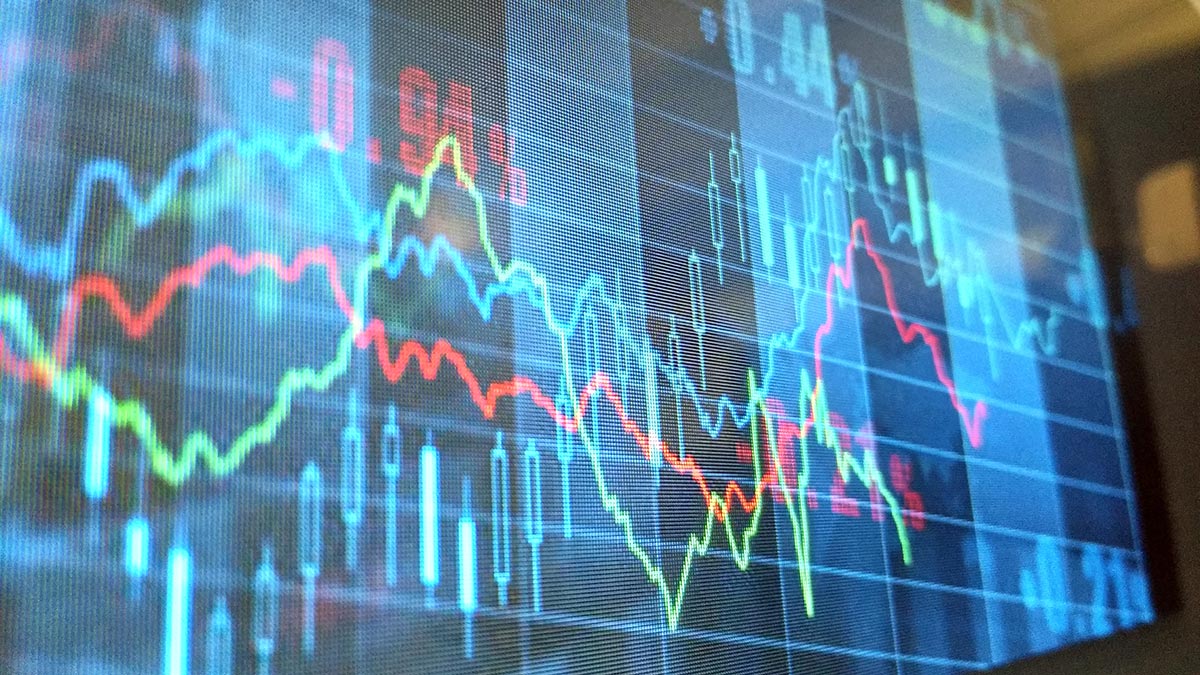The European Securities and Markets Authority (ESMA) is committed to investor protection. It ensures companies that sell financial products, and those that advise on buying them, treat clients in a fair manner and with the clients’ best interests at the forefront of their strategy. The authority also puts forth the legislation that ensures they provide clients with clear and transparent information and recommend products that will match their objectives.
The part of the EU legislation that enables ESMA to do this is the Markets in Financial Instruments Directive II (MiFID II). This article provides a MiFID II directive summary to help you understand how this works.
MiFID II is one of several regulations introduced by the European Union in recent years that aim to increase the transparency of the markets and make it easier for shareholders to make investment decisions based on the best available information. Another example is the Market Abuse Regulation, which was developed to increase market integrity, reduce insider dealing and clamp down on the unlawful disclosure of inside information.
Keep reading to find out more about MiFID II and how it affects your organisation.
1. What is MiFID II?
MiFID II is a key element of the EU’s efforts to regulate the financial market and make it fairer. Effective from 3 January 2018, MiFID II refers to the legislative goals that EU member states must strive to achieve in the areas of:
- Market infrastructure and transparency
- Transaction reporting on both the buy-side and sell-side
- Investor protection
- Supervising market activity
- Product governance
- Rules on inducements
The actual rules, which all parties must follow to achieve these goals, are set out in the Markets in Financial Instruments Regulation (MiFIR). However, when people refer to MiFID II, they generally mean both the directive and the regulation, as they go hand in hand and aim to achieve the same result.
One of the main outcomes of MiFID II is the increase in record-keeping obligations, relating to the processing of trades; businesses must be able to reconstruct events surrounding trades from the recorded conversations and digital interactions.
MiFID II was an update on the original Markets in Financial Instruments Directive from 2007, which created a single investment market that increased competition while harmonising investor protections across the union. The original MiFID did so through these methods:
- Setting requirements for investment firms relating to their organisation and how they conduct business
- Creating requirements for authorisations on regulated markets
- Requiring compulsory reporting to fight market abuse
- Increasing transparency requirements for share trading
- Introducing strict rules on admitting financial instruments to trading
There have also been some updates to MiFID II since its introduction, including the MiFID II Delegated Regulation, MiFID II Delegated Directive and Commission Delegated Regulation.
2. Scope of MiFID II: Who is affected by the Directive?
MiFID II affects “investment firms, market operators, data reporting services providers” within the European Union and companies in non-EU nations that provide investment services within the union or have a base within the EU from which they carry out investment activities.
The products that fall within the scope of MiFID II include any that are traded on European regulated markets, organised trading facilities (OTF), and multilateral trading facilities (MTF). This covers all equities, debt instruments, commodities, futures and options, currencies and exchange-traded funds. Anything traded over-the-counter (OTC) is subject to increased transparency requirements.
3. MiFID II summary: The key aspects
3.1 Increase in investor protection
Whereas MiFID I required financial firms to take “reasonable steps” to gain the best possible results for their clients, MiFID II intensifies that requirement to an obligation on companies to get it right. It states that financial firms should “take all sufficient steps to obtain, when executing orders, the best possible result for their clients taking into account price, costs, speed, likelihood of execution and settlement, size, nature or any other consideration relevant to the execution of the order”.
In addition, best execution reporting requirements mean that firms must periodically publish data that shows the quality of their execution. They must also release this information at least annually and at no charge to investors. This helps to evidence that they have taken sufficient steps to obtain the best results for their customers. The directive also requires trading venues to release quarterly results detailing the quality of the execution of trades at the venue during the reporting period.
Another investor protection measure from MiFID II means that firms must notify customers when the overall value of their portfolio drops by ten per cent from the level at the beginning of the reporting period. This is repeated for every additional depreciation at a multiple of ten per cent.
This rule was suspended in the UK, which implemented MiFID II before Brexit, due to market volatility caused by the COVID-19 pandemic.
Financial firms must, under MiFID II, “establish adequate policies and procedures sufficient to ensure compliance of the firm including its managers, employees and tied agents with its obligations under this Directive as well as appropriate rules governing personal transactions by such persons”. To help comply with this aspect of the directive, TradeLog enables you to pre-clear employee personal trades and monitor trading for any violations.
3.2 Increase in transparency
MiFID II extends the scope of pre- and post-trade reporting requirements for firms from merely equity products to include the following:
| Type of instrument | Example |
| Equity-like products | Exchange-traded funds (ETFs), depositary receipts, certificates |
| Non-equities | Bonds, structured finance products, emission allowances and derivatives |
It also applies to systematic internalisers (SI) and regulated trading venues.
Trading venues must publish the current bid and offer prices relating to products that they advertise, as well as details of the proportion of the market willing to trade at those prices, unless they qualify for a specific waiver. After the trade, the venues must publish the price, volume and time of the transactions.
As a minimum, the information should include:
- The financial instrument identification code
- The price at which the transaction was executed
- The volume and the time of the transaction
- The currency of the transaction
- The code of the trading venue
3.3 Categorisation of clients
MiFID II creates three categories for clients. They are:
| Category | Explanation |
| Eligible counterparty (ECP) | Professional clients whose company profile is such that they are deemed to have the experience to make investment decisions. |
| Professional clients | Includes companies that match two of the following:
• a total balance sheet equal to or exceeding €20,000,000 • a total net turnover equal to or exceeding €40,000,000 • a total own capital equal to or exceeding €2,000,000 |
| Retail clients | Any client that does not qualify for the other two categories. |
Companies should use a risk-based approach to set the amount of investor protection they provide each type of client. Retail customers should receive the highest level of protection, followed by professionals, and with ECPs receiving the lowest level of protection.
3.4 Reinforcement of supervisory powers
Working together with ESMA, national competent authorities (NCAs) can oversee trades using the new transparency rulings and intervene before or after they take place if they feel there is a good reason.
3.5 Introduction of controls in the use of algorithms and high-frequency trading
Many people have applauded the rise of high-frequency trading (HFT) and algorithmic trading for their ability to create greater liquidity and lower costs. But, besides the perceived benefits, there is also a concern among regulators that they can cause greater volatility and other market distortions. This is why MiFID II looks to increase the monitoring and regulation of this sector.
Firms that provide these services must ensure their systems are resilient, effective and tested, as well as implement risk control measures. They should also instigate an order limit to reduce the chances of erroneous orders distorting the market. In addition, if there are algorithms that could cause a disorderly market, firms must be able to identify these risks and cancel all orders made using that algorithm.
Another control should be the automatic cancellation of orders that a trader is not permitted to make.
3.6 Enhancement of administrative sanctions regimes
Article 70 of MiFID II states that NCAs can implement administrative sanctions on parties that contravene any element of the directive and regulation, and that these sanctions should be “effective, proportionate and dissuasive”.
However, where the infringement of the directive results in a party breaking that particular country’s criminal law, member states can undertake criminal proceedings instead.
Regulators in member states are now able to ban financial products or activities in their jurisdictions, and any sanctions imposed on a party are made public, providing that it what is hoped to be a significant deterrent.
3.7 The harmonised regime for access from third countries
If a firm from a third country – a jurisdiction outside of the EU – wants to serve European Union retail or professional clients, they must set up a base in each EU country in which they operate. The member state must authorise this request and supervise the operations.
Companies from a third country that deal with per se professional clients or ECPs do not have to open a branch in each country. They can operate from their home base or a branch in the EU if they wish.
Part of MiFID II’s requirements is that the EU formalises agreements with regulators in third countries, having assessed the regime in each of those countries.
3.8 Record-keeping
MiFID II Article 16(6) states that “an investment firm shall arrange for records to be kept of all services, activities and transactions undertaken by it which shall be sufficient to enable the competent authority to fulfil its supervisory tasks and to perform the enforcement actions under this Directive”.
The records should include recordings of telephone calls, electronic messages and face-to-face meetings that were either made or intended to be made by employees. The rule applies whether they were on the employee’s own behalf or the behalf of clients.
Financial institutions should keep all records on a durable medium, in a searchable format that ensures they are accessible and readily available upon request. These should be kept for a minimum of five years.
You should be able to use the records of these conversations and messages to reconstruct the entire lifecycle of a trade.
4. Penalties for non-compliance with MiFID II
When a natural or legal person infringes the terms of the directive, there are several penalties applicable for NCAs:
- Issuing a public statement regarding the entity and the nature of its infringement.
- Issuing a cease and desist letter.
- Suspending the entity from trading in a certain venue.
- Temporary or permanent bans on natural persons holding management positions in investment firms, depending on the severity and repeated nature of their infringements.
- For legal persons, a fine of up to €5,000,000 or up to ten per cent of the total annual turnover.
- For natural persons, a fine of up to €5,000,000.
- A fine of up to twice the value of the benefit gained from the infringement, where that benefit can be quantified. NCAs can issue this sanction even if it exceeds the maximum penalty noted above.
5. FAQs
5.1 How will MiFID II affect investment decisions?
Asset managers must now pay separately for research from analysts as part of the unbundling aspect of MiFID II. This was previously often included in trading fees, but the EU wanted to separate the costs to prevent the risk of fund managers being influenced by third parties, rather than acting in the best interests of their clients.
Increased transparency will also allow investors to make more informed decisions over their trades.
5.2 Does MiFID II have an impact beyond the EU?
Although MiFID II is an EU directive, it affects financial firms from outside of the bloc who wishes to do business in the union.
5.3 What is reportable under MiFID II?
Companies must report their trades to the public and the NCAs, who will use the information to monitor the markets.
5.4 What is MiFID II in a nutshell?
MiFID II is an EU regulation that applies to investment firms, market operators and data reporting services providers. Its key objective is to increase investor protection, improve transparency and provide a harmonised regime for companies from a non-EU country that offer investment services within the European Union.
6. Conclusion
There are numerous requirements for financial market participants as a result of MiFID II. This MiFID II directive summary shows the sheer scale of the legislation. Compliance with all of the different aspects is a major task and is made easier by compliance software.
As a compliance solution, TradeLog can help you automate common tasks related to MiFID II. One of the features, for example, allows you to set parameters for pre-clearance of your employees’ personal trades. It also monitors transactions to alert you as soon as a violation occurs. Get a demo of TradeLog for your organisation.
7. References and Further Reading
Share this post
Article Summary
- 1. What is MiFID II?
- 2. Scope of MiFID II: Who is affected by the Directive?
- 3. MiFID II summary: The key aspects
- 3.1 Increase in investor protection
- 3.2 Increase in transparency
- 3.3 Categorisation of clients
- 3.4 Reinforcement of supervisory powers
- 3.5 Introduction of controls in the use of algorithms and high-frequency trading
- 3.6 Enhancement of administrative sanctions regimes
- 3.7 The harmonised regime for access from third countries
- 3.8 Record-keeping
- 4. Penalties for non-compliance with MiFID II
- 5. FAQs
- 5.1 How will MiFID II affect investment decisions?
- 5.2 Does MiFID II have an impact beyond the EU?
- 5.3 What is reportable under MiFID II?
- 5.4 What is MiFID II in a nutshell
- 6. Conclusion
- 7. References and Further Reading





